Bathroom Cabinet
Posted 20 July 2018
This is the introductory page for a paid video series. Want to watch more of this project? Select the best option below to get started.
Description
This newly designed bathroom cabinet can be adapted for many uses. Featuring a mortise and tenoned door to frame a fitted mirror panel, the cabinet also has two adjustable and removable shelves. The door hinges fit into a rebated opening in the main carcass which has a variation on the stopped housing dado and some subtle roundovers. The cabinet features a hand turned cabinet door knob using the lathe and is finished out using a water-based finishing technique.
Tool List
- Knife
- Square
- Combination gauge (or marking gauge and mortise gauge)
- Tape/Ruler (or both)
- Chisel hammer
- Chisels (at least 1/4″ (6mm), ⁵⁄₁₆″ (8mm) and 1″ (25mm)
- Hand router (see how to make a ‘Poor Man’s Router here)
- Smoothing plane (No 4)
- *Jack Plane (No 5)
- Plough Plane
- Rebate Plane
- *Bullnose Plane
- *Low Angle Block Plane
- Mortice guide (made when cutting tenons)
- Handsaw
- Tenon saw
- Dovetail saw
- Brace & bit and hand drill or drill driver
- Screwdriver
- Square Awl
* = optional
Joints List
- Stepped housing dado
- Haunched mortise and tenon
- Mitre

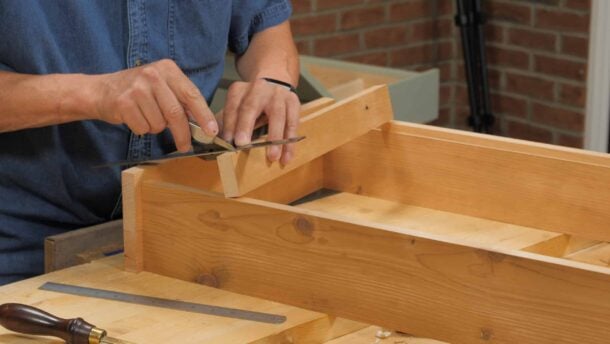
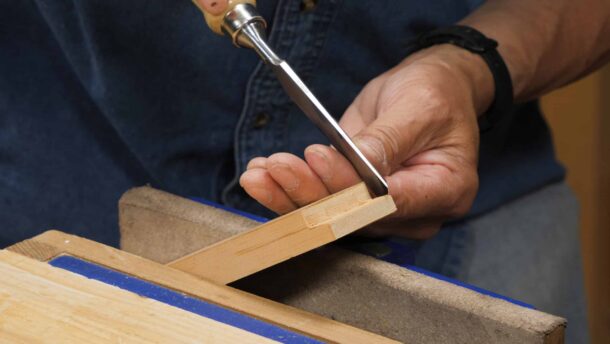
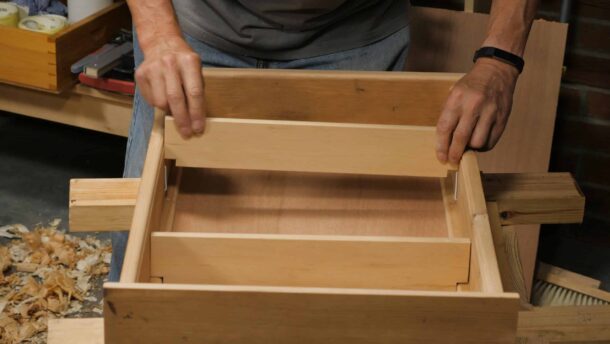
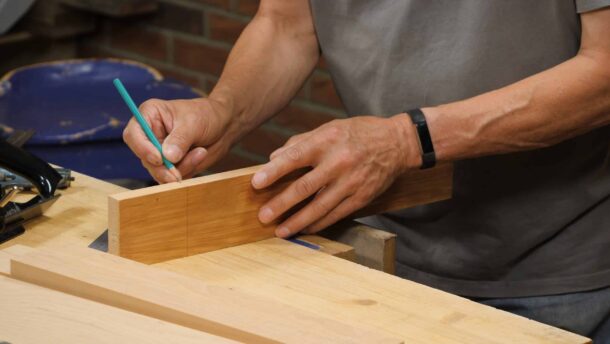
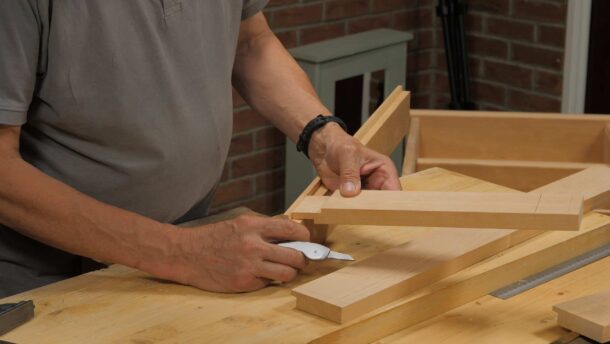
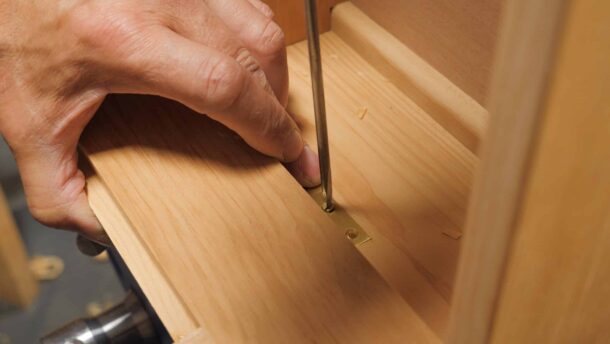
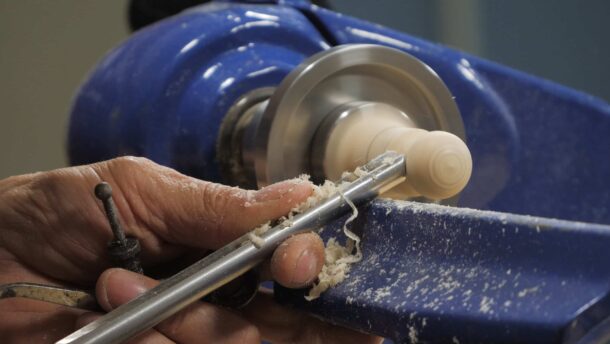
Looks indeed nice and not overcomplicated. Thanks for sharing
Not over complicated for the most part….however very much exacting- as in much of these projects. Just finished mine and while playing “Monday morning quarterback”, reviewing it demonstrates where I neglected some of this exactness. Still a very enjoyable and rewarding project.
It is enlightening to me on how much deviations from this “exactness” telegraphs exponentially in the final presentation. Something to strive towards.
Hmmm….if I ever do reach perfection…should I forever, hang up my plane? I think I would rather always find imperfections. Imperfection keeps me engaged.
Kurt,
I too look at the things I make and wish I could do better, but then I found this happens to everyone and find solace in these two rather random quotes:
“Don’t do your best piece ever do your second best piece ever.” Gary Wogowski
And “Progress, not perfection” Robert McCall.
This cabinet looks really nice. Thanks for sharing.
Perfect timing, I just needed to replace the cheap and ugly bathroom cabinet that I currently have.
Your not the only one.
This project comes at a great time for me. Currently building new kitchen cabinets so the applications in this are particularly important.
Thank you Paul and staff.
I’d love a series showing us how to make beautiful, shaker style kitchen cabinets. Bespoke cost a fortune, how great it would feel to build your own.
Good luck with the build Andrew!
Thanks Phil. I appreciate it.
I am confused about hinges for this and other projects. On my practice dovetail boxes, I buy inexpensive hardware store hinges, but want to try something better for this project. However I am pretty ignorant about them and Paul only makes very brief comments about what he is using on the videos I have seen, including this one. Can anyone clarify what he is using or what we should be using, for this or other projects? I assume Paul is using butt hinges (something I had to look up). He says they are “drawn” brass, which I assume is the same as “extruded” brass. He does not say whether he is using “stop” hinge, which I assume are hinges that only open so far. Places like Lee Valley distinguish their box hinges fromtheir cabinet hinges, which look a lot like some of their box hinges. Is there some difference here? And then there is cost. Hinges that go beyond the hardware store ones are very expensive. Some Brusso hinges can be $50. Is that really the sort of hinge Paul is using? Any information, or suggestions about what I should try, would be much appreciated. Thanks!
You’re absolutely right about Brusso hinges. Those are very well made heavy hinges but they are also expensive. The cheap hardware store ones are stamped hinges and are usually just plated steel that starts out as a flat strip that’s stamped and the barrels are then formed by rolling the strip material in the forming die. Extruded (drawn) hinges start out as a brass extrusion that has the profile of the hinge. The extrusion is cut to length and then machined to form the individual barrels, mounting holes, hinge pin hole, etc. Paul uses the extruded type for everything I’ve seen him do.
The cabinet hinges or box hinges you see are usually both butt hinges and can pretty much be used for either application as long as the size is appropriate. Stop hinges are just what you said and typically limit the hinge to 95 degrees of rotation. That’s just enough to allow a box lid to stand open without falling all the way back. I don’t think I’ve seen Paul ever use them and you wouldn’t want one here. For this, you need a butt hinge and from there, it comes down to how much you want to spend. You can find solid brass extruded hinges from manufacturers other than Brusso at half the Brusso price but that’s still pretty expensive. The important thing to look for is a solid brass extruded butt hinge.
Harry, thanks for your answer. I have been wondering the same thing and your explanation helps immensely.
Agree
/soj
Thanks Harry. That helps a lot. I forgot to ask one question. Paul uses two inch hinges on this project. But I wonder how wide they should be. Is there a standard way to decide how wide? For example, this project uses 3/4 inch stock for the doors. I see online 2 inch hinges that vary a fair amount in width, e.g., some are one inch and others are 7/8 inch while yet others are 1 and 3/8 inch. (I think those are “open flat” sizes, rather than the sizes of each wing. Sometimes websites make that clear and sometimes not.) Is there a standard, say, that on the edge of a door (or box) the hinge should take up 2/3, or 3/4, of the size of the stock? On a 3/4 inch door, is a half inch leaf adequate? It seems a bit small, but maybe not.
If there’s a standard for determining what the width a hinge should be, I’m not aware of it. It’s pretty much up to you and a lot of it is just simply aesthetics. When I’m doing it, I want to make sure I leave enough material at the back of the hinge mortise so that it isn’t too fragile and in my book that means an absolute minimum of 1/8″ of material left after I cut the hinge mortise. So in this case, with a 3/4″ thick door, the distance from the knuckle of the hinge to the edge of the hinge shouldn’t exceed 5/8″. That might actually be pretty close to the 1-3/8″ hinge you mentioned because that width includes the knuckle.
That’s how I figure out the maximum width hinge I can use but I would usually rather have a little more material left behind the mortise. It’s very easy to split out a 1/8″ lip especially if it’s pine or a soft wood. If you can find something like a 2″ x 1-1/8″ hinge, I think that would be fine. Making the hinge wider doesn’t really make it any stronger anyway. It just makes it a little harder for the hinge itself to pry the screws out if the door or lid can be opened too far but that shouldn’t happen here. So to answer your question, a 1/2″ “leaf” would be fine in my opinion.
Thanks again Harry. That was very helpful. Now I just have to get some decent hinges and get to work on a few cabinets!
Just a small comment regarding the cutting list. For the top & bottom section of the carcass the imperial length is 19” which equates to 483mm and not 453mm. The drawing shows the correct conversion, it’s just the cutting list that’s incorrect.
Thank you for pointing this out. Missed that one. Will get it changed asap.